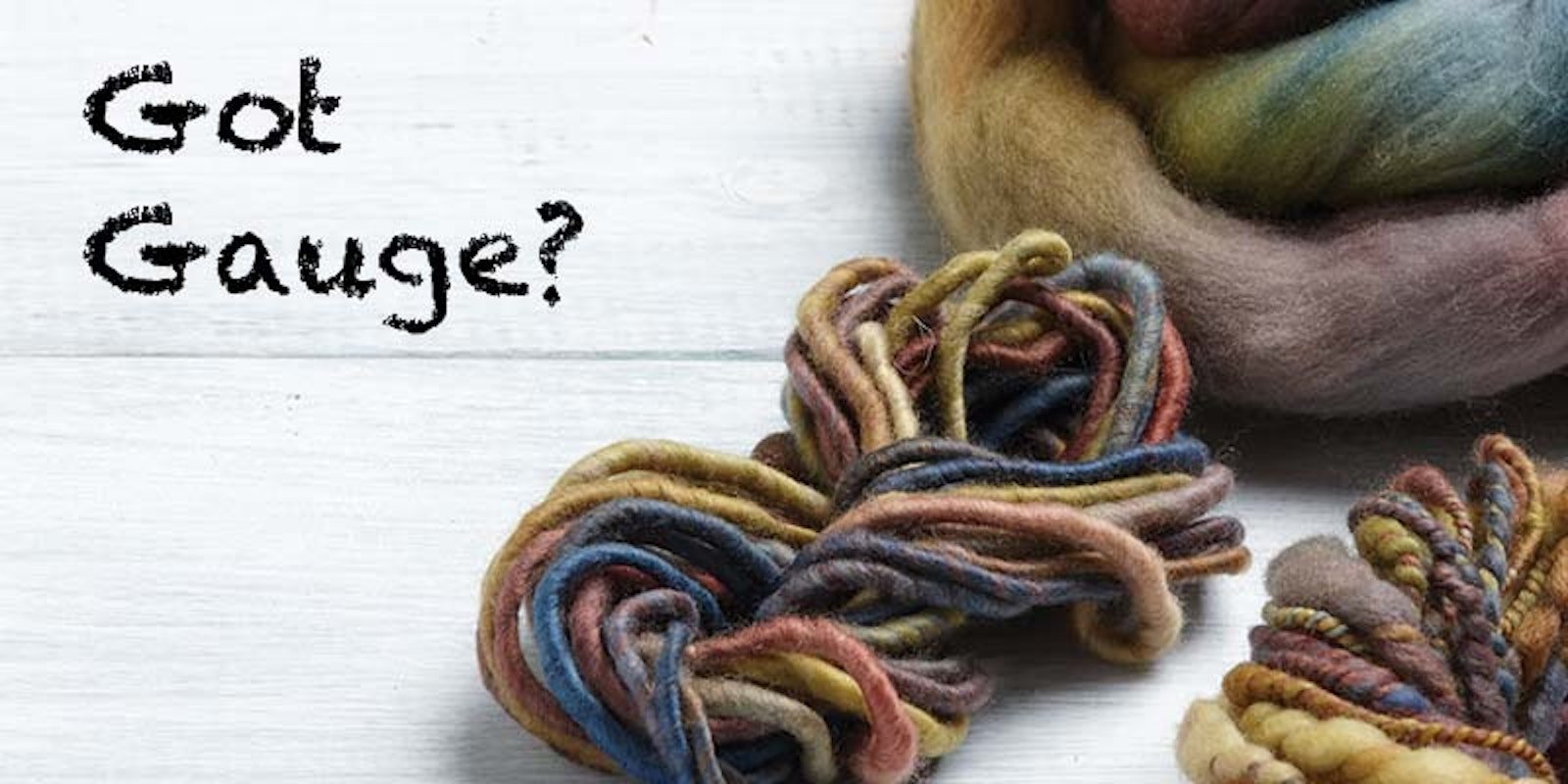Spinning without a project in mind doesn’t mean yarn without a purpose. In “Got Gauge? (Me Either)” from Spin + Knit 2017, Leslie Ordal shares her four tips for knitting with handspun yarn no matter what the gauge is.
Let’s be honest—I mean, really honest: how many of us spin to spec? My guess is that a good number of us (perhaps even the majority) at least occasionally spin a beautiful braid of fiber with no other considerations than “the way it wants to be spun,” ending up with a skein that may well be a complete surprise in terms of weight, loft, drape, and other characteristics.
Thinking about those skeins you spun and haven’t made into anything yet? Here are a few ideas to get you thinking about how to use your handspun, no matter how it turned out.
One
Unless you’re planning on a knit-to-the-very-last-yard project, aim for a pattern that uses only about 80 percent of your yardage. This will give you enough leeway to cut out sections that may be unacceptably inconsistent while still leaving you with enough yarn to complete your project.
Two
Certain items rely more on gauge for success than others. A close-fitting sweater will be more difficult to create without a gauge swatch than, say, a ribbed hat or a shawl. Speaking of gauge, a denser fabric will hide inconsistencies in your yarn better than a looser, drapier one.
None of the yarns in the swatches below were spun with a basketweave-patterned sweater in mind, but each would make a lovely garment in its own gauge. Clockwise, left to right: 2-ply; 1,063 yyp; 10 wpi; DK weight; 22 sts and 32 rows = 4". 2-ply; 513 yyp; 8 wpi; worsted weight; 18 sts and 24 rows = 4". 2-ply; 944 yyp; 11 wpi; DK weight; 21 sts and 32 rows = 4". 2-ply; 588 yyp; 7 wpi; bulky weight; 14½ sts and 24½ rows = 4". Photo by George Boe.
Three
If you have a large quantity of fairly consistent handspun yarn and the burning desire to get knitting already (skipping the gauge swatch and getting right down to the instant gratification of casting on and completing those first few rows), consider a small gaugeless project such as a quilt square, small toy, or beret first. If you like the finished item, then you can use that as a gauge swatch of sorts before jumping into a bigger and more committed project. Try to match techniques between the two projects, though. For example, if your bigger project is in stockinette, make sure the small one is in stockinette as well. The same applies to working in the round versus knitting back and forth.
Four
If your desire to get knitting already is even more intense and you want to skip the small trial project, by all means, go ahead—there are no knitting police. This approach does call for paying close attention to the type of fabric you’re getting and openness to ripping back if you don’t like it and starting over with a different needle size.
In the end, the one who decides project success is you. If you knit a project with your handspun and couldn’t be happier with it, it doesn’t matter how you made it. You might want to experiment with spinning to spec someday, or you may decide it’s just not for you, but there’s more than one way to arrive at a finished item—made with your own handspun—that you love.
— Leslie
Leslie Ordal lives in Toronto, Ontario, Canada, where she works in health care research and teaches spinning. (She rarely spins to spec.) Her occasionally updated blog can be found at www.leslieordal.com.


